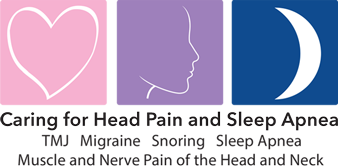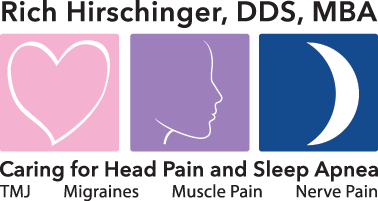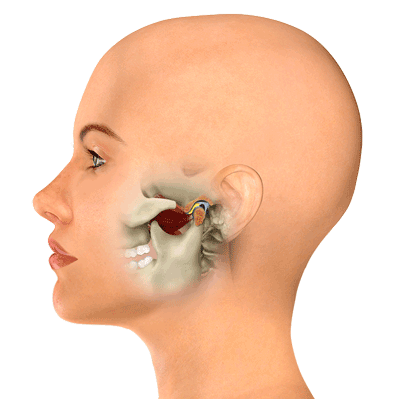

Diplomate American Board of Orofacial Pain
9615 Brighton Way, Suite 323
Beverly Hills, CA 90210
888.981.8981
More About TMJ
Treatment of TMJD
The pain and discomfort associated with TMJD, which stands for temporomandibular joint disorder, can vary from mild and infrequent to severe and debilitating. Depending on the level of pain and associated disability, treatment of TMJD may differ. It can also be addressed through different treatment options based on suspected causes. The important part is to determine what is causing the pain. This is based on getting a good diagnosis, which is what Dr. Hirschinger does at his private practice in Beverly Hills. Muscles can be the cause of pain, osteoarthritis can be the cause of pain, or it can be caused by other issues such as the ear or some of the facial nerves.If TMJD symptoms don't hamper daily activities and the pain can be described as between one and three on a ten-point pain scale, the condition is often manageable through patient self-care. This includes performing any of the following basic treatment activities:
-
 Apply cold and hot packs: An ice pack or cold compress applied to the affected area for 10 to 15 minutes will reduce swelling and inflammation. Moist heat applied to the area between 10 to 15 minutes can also improve circulation to the area and reduce pain.
Apply cold and hot packs: An ice pack or cold compress applied to the affected area for 10 to 15 minutes will reduce swelling and inflammation. Moist heat applied to the area between 10 to 15 minutes can also improve circulation to the area and reduce pain. - Do facial stretching and exercises: Dr. Hirschinger may recommend stretches at his office in Beverly Hills that can help reduce tension in the jaw. Perform prescribed exercises as directed to stretch the muscles of the jaw and relieve unnecessary muscle tension. He is the inventor of the gentle jaw, which is a passive jaw stretching device that is available on Amazon and on www.gentlejaw.com.
- Hinge-Axis exercise: The image to the right is what we call the "hinge axis" exercise. The teeth should not touch and you don't want to open very wide, and the motion will look like you have a jaw tremor. You should do this exercise 6 times a day for 30 seconds each time. The goal of this exercise is to stimulate the production of fluid inside the temporomandibular joint.
- Eat soft, small foods: Foods that don't require much chewing due to small size or soft texture, such as soup, scrambled eggs, cottage cheese, yogurt, cooked beans, diced fruits, and cooked vegetables will be easier to eat than foods that are hard, crunchy, chewy, thick or large. Salad is an example of a food that requires a lot of chewing, and should be avoided with a painful joint. Here is a page with more information about foods to avoid. The bottom line is that if you are eating a food that causes pain, stop eating that food.
- Take medicine for pain management: Over-the-counter pain relievers such as naproxen (Aleve) can minimize the experience of pain and reduce inflammation. Dr. Hirschinger may also prescribe stronger pain medications for pain relief. Prescription muscle relaxants may aid patients who grind their teeth by relaxing the muscles of the jaw. Low doses of antidepressants have also been found to reduce pain.
- Avoid high-tension jaw movement: Moving the jaw with excessive force can strain the joint and the muscles that open and close the mouth, and hamper treatments aimed at reducing the pain. Yawning and chewing should be kept to a minimum. Singing or yelling should also be avoided. Proper posture while on the phone or at a computer should be maintained. Avoid clenching the jaw. Practice keeping teeth apart by gently placing the tongue on the roof of your mouth behind your upper front teeth with your teeth slightly separated. Practicing stress reduction techniques to relax muscle tension in the jaw can help alleviate some of the pain and swelling associated with TMJD.
- Use corrective oral appliances: Oral appliances may help reduce tension on the jaw muscles and the joint. Permanent changes in the bite through extensive crown or bridge work and orthodontics have not been proven to be effective and may worsen TMJD symptoms. If a contributing factor is teeth grinding or clenching, a splint or night guard can be worn while sleeping. Clenching and grinding cannot be stopped but the oral appliance will help prevent tooth-to-tooth wear. The goal is that TMJD symptoms will be reduced as the affected area experiences a period of reduced irritation and use.
Sometimes the severity of the TMJD condition is such that more invasive treatment options are required. However, special care must be taken before deciding to undergo any invasive solution. Surgical treatments are often irreversible and remain controversial, as they have not been proven effective by any studies or research. If surgery is being considered when all other treatment options have fallen short of providing satisfactory relief, there are three only a few types of surgery that may be considered:
- Arthrocentesis: This procedure is the least invasive of any procedure. It involves injecting steroids into the joint to reduce inflammation.
- Arthroscopy: This procedure is guided by a very small camera inserted through a small incision in front of the ear. The camera allows the doctor to examine the temporomandibular joint and establish a cause of the TMJ condition, such as tissue inflammation or a misaligned disc or joint. Then the oral surgeon can correct the problem by removing inflamed tissue or adjusting alignment of the joint.
- Open-joint surgery: If arthroscopic surgery is not available for any number of reasons, the TMJ region may need to be opened to allow an oral surgeon full view and access to the temporomandibular joint for diagnosis and correction.






